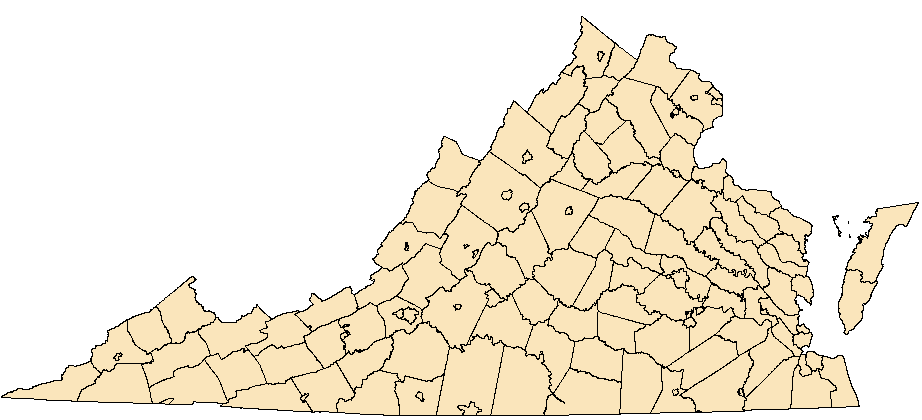Enallagma pallidum Root, 1923
Pale Bluet
NatureServe Global Rank: G4
Virginia State Rank: S1S2
VA DGIF Tier: IV
Federal Legal Status: None
Virginia Legal Status: None
Description: The male Pale Bluet's thorax is almost entirely unmarked blue, with only a thin black line above. The female's thorax is pale blue with light brown shoulder stripes. The abdomen is black with a blue base and a blue tip, and without blue rings around the segments. The size range is 29-36mm (1.4-1.8 inches).
Similar species: The Attenuated Bluet (E. daeckii) is larger, has more extensive blue at the end of the abdomen, and the base of the abdomen is all blue with a very small black spot, whereas there is more extensive black on the Pale Bluet. Argia apicalis is superficially similar, but its abdomen is stouter and shorter, and with a black base.
North American Range: The Pale Bluet is found in the southeastern United States only, from Delaware and southeast Virginia to Florida and the gulf coast.
VA Observations by Locality: Chesapeake, City of | Chesapeake, City of



Flight season and broods: Virginia flight dates range from 26 May through 2 August.
Aquatic Habitat: The Pale Bluet prefers swampy lake shores and slow rivers of the coastal plain.
Behavior and Ecology: The Pale Bluet will perch in partial shade where it may be difficult to detect.
Population trend and potential threats: The Pale Bluet is not a common species in its range, and known Virginia localities are few. It is recorded from only nine states, and is regarded as critically imperiled in Delaware and Maryland (NatureServe 2011).
Management practices: Monitor and protect occupied habitats.
References: Lam, Ed. 2004. Damselflies of the Northeast. Biodiversity Books. Forest Hills, New York. 96 pp.
NatureServe. 2011. NatureServe Explorer: An online encyclopedia of life [web application]. Version 7.1. NatureServe, Arlington, Virginia. Available http://www.natureserve.org/explorer (Accessed: February 20, 2012).
Paulson, Dennis. 2011. Dragonflies and Damselflies of the East. Princeton University Press. Princeton and Oxford. 538 pp.
Roble, Steven M. 1994. A preliminary checklist of the Damselflies of Virginia, with Notes on Distribution and Seasonality. Banisteria 4: 3 - 23.
Roble, Steven M. 2011. Damselflies of Virginia- Flight dates. Unpub.
Virginia Department of Conservation and Recreation, Natural Heritage Program, 600 E. Main St., 24th Floor, Richmond, VA 23219
This atlas was compiled
by the VA Natural Heritage Program with funds provided by the VA Dept. of Game and Inland Fisheries through a state wildlife grant
from U.S. Fish and Wildlife Service
Questions/Comments? Check the contacts page |
Internet Privacy Policy Statement
Last Modified: Friday, 26 February 2021, 03:21:56 PM